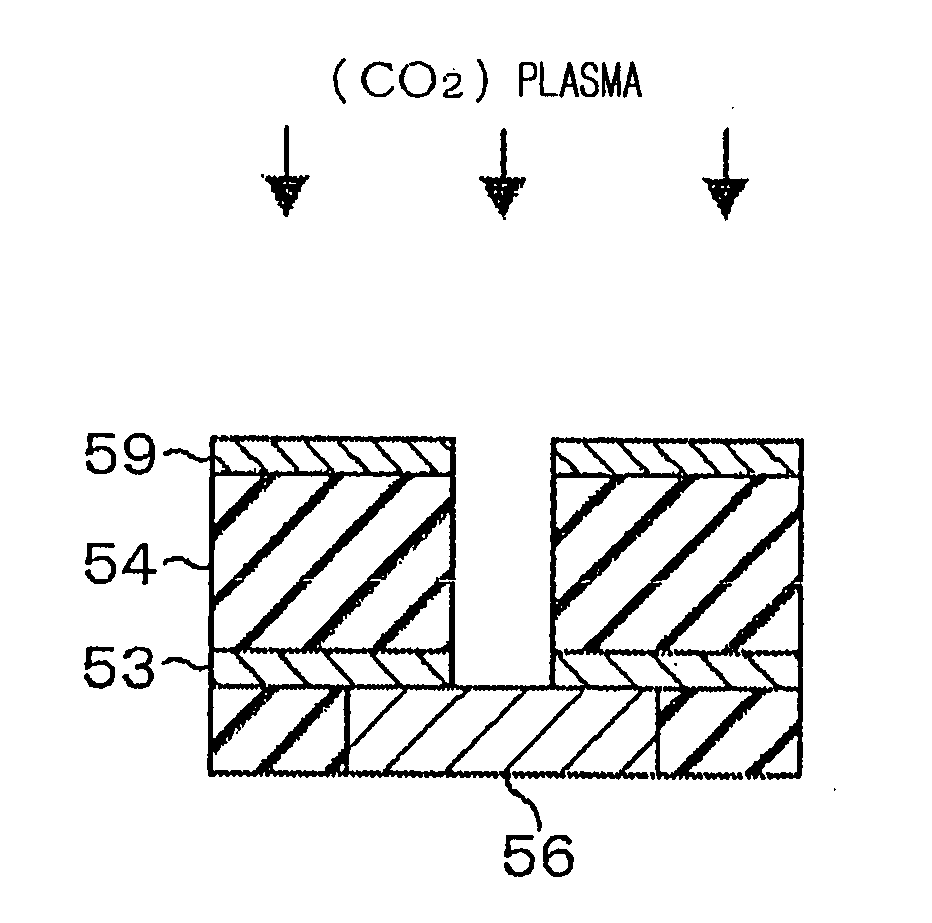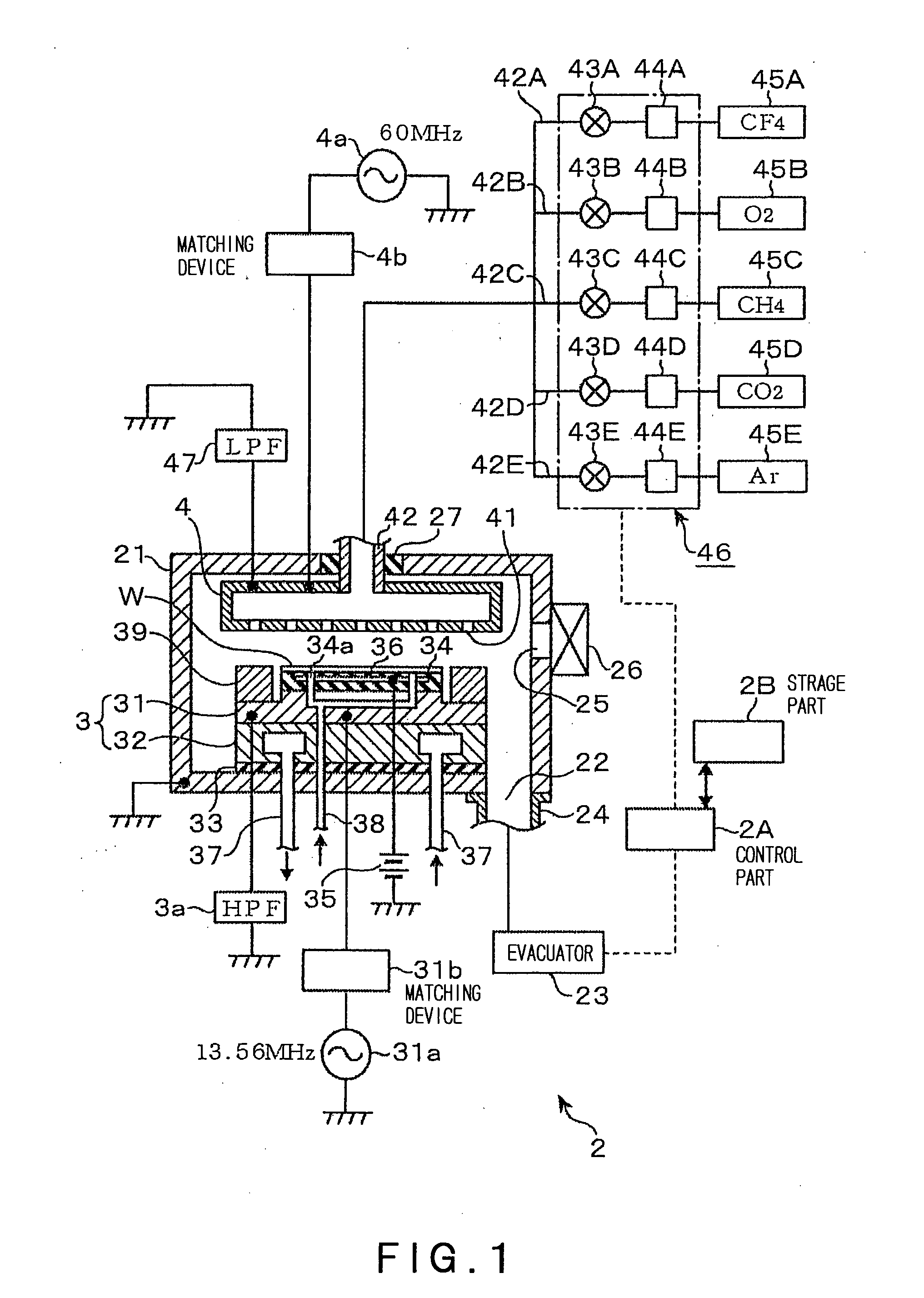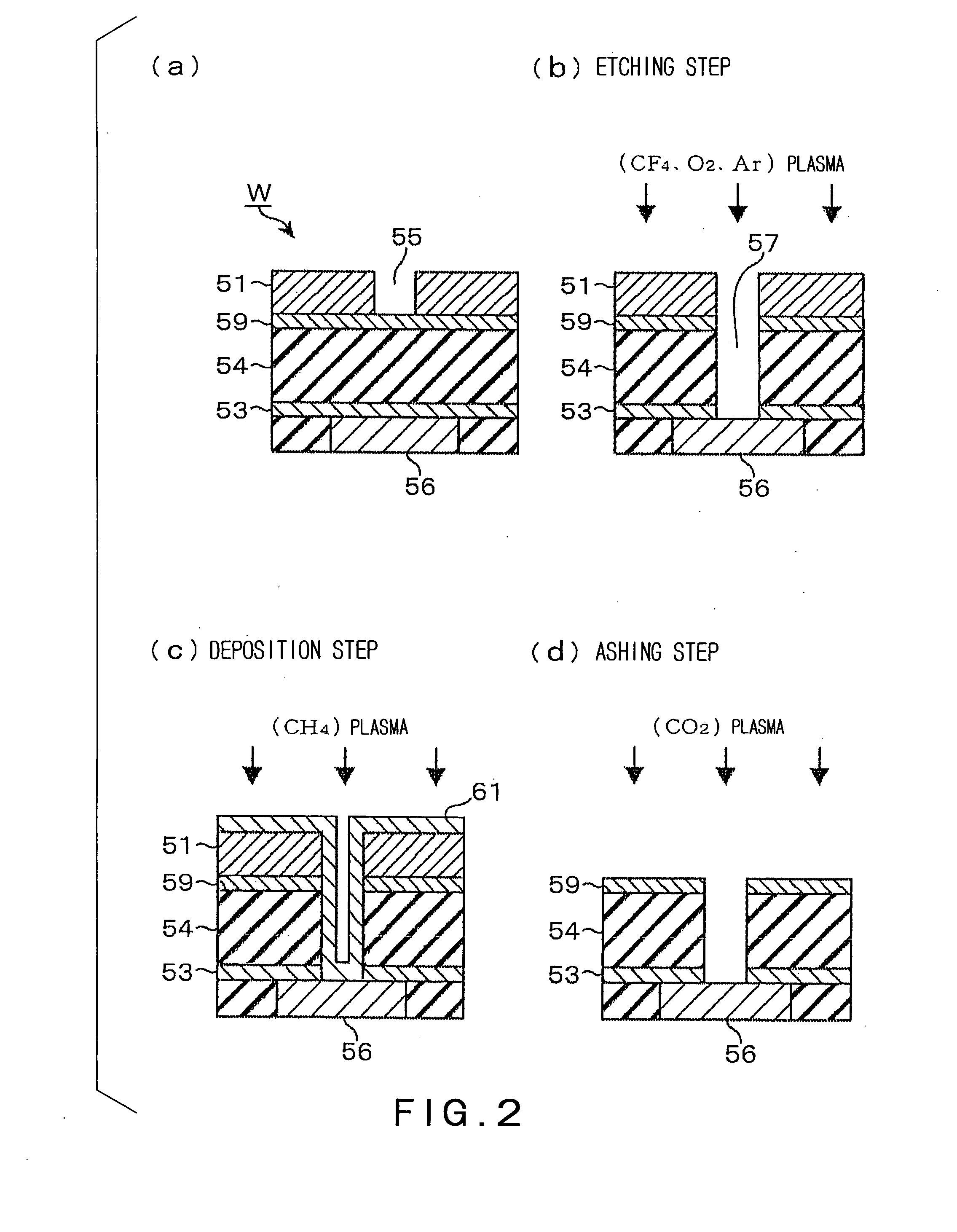Method of manufacturing semiconductor device
a manufacturing method and semiconductor technology, applied in the field of manufacturing semiconductor devices, can solve the problems of affecting the film quality of insulation films, the deviation of the design value of semiconductor devices, and the inability to apply techniques to sioch films, so as to avoid the degradation of insulation films
- Summary
- Abstract
- Description
- Claims
- Application Information
AI Technical Summary
Benefits of technology
Problems solved by technology
Method used
Image
Examples
experiment 1
[0076] Comparison of generation of the damage layer 60 between a case in which the protective film 61 is deposited before the ashing step, and a case in which the protective film 61 is not deposited before the ashing step.
example 1
A. Example 1
[0077] As described above, after the protective film 61 was deposited on the wafer W shown in FIG. 3, the ashing process was performed. The process conditions in the deposition step of the protective film 61 and the ashing step were as follows:
(Deposition Step)Frequency of upper electrode 460MHzPower of upper electrode 4750WFrequency of lower electrode 3113.56MHzPower of lower electrode 31500WProcess pressure1.3 Pa (10 mTorr)Process gasCH4 / Ar = 100 / 100 sccmProcess period10sec
[0078]
(Ashing Step)Frequency of upper electrode 460MHzPower of upper electrode 4200WFrequency of lower electrode 3113.56MHzPower of lower electrode 31400WProcess pressure20 Pa (150 mTorr)Process gasCO2 = 1500 sccmProcess period60sec
[0079] In order to evaluate an amount of the damage layer 60 of the SiOCH film 54, the thus processed wafer W was immersed in a solution containing 1% by weight of HF for 30 seconds, and then a line width CD2 of the groove 58 was measured. As shown in FIG. 4(a), as compa...
experiment 2
[0088] In order to verify whether the evaluation method of the damage layer 60 in Experiment 1 (immersing the wafer W in a solution containing 1% by weight of HF for 30 seconds, and measuring the ΔCD) is an appropriate evaluation method or not, elements of the wafers W processed in Example 1 and Comparative Example 1-1 were analyzed. By using an electron energy loss spectroscopy (EELS), the elemental analysis was conducted by measuring a position corresponding to a position of the measured line width of the groove 58 in Experiment 1. The results are shown in FIG. 6A and FIG. 6B. In order to show an average composition of the SiOCH film 54, as shown in FIG. 6C, FIG. 6A and FIG. 6B represent an arrangement in which the SiOCH film 54 between the grooves 58 is positioned in a center part thereof, and the wall surfaces of the grooves 58 are positioned on the right and left sides.
[0089] Both in Example 1 and Comparative Example 1-1, there was confirmed on the sidewall ...
PUM
| Property | Measurement | Unit |
|---|---|---|
| pressure | aaaaa | aaaaa |
| frequencies | aaaaa | aaaaa |
| frequencies | aaaaa | aaaaa |
Abstract
Description
Claims
Application Information
 Login to View More
Login to View More - R&D
- Intellectual Property
- Life Sciences
- Materials
- Tech Scout
- Unparalleled Data Quality
- Higher Quality Content
- 60% Fewer Hallucinations
Browse by: Latest US Patents, China's latest patents, Technical Efficacy Thesaurus, Application Domain, Technology Topic, Popular Technical Reports.
© 2025 PatSnap. All rights reserved.Legal|Privacy policy|Modern Slavery Act Transparency Statement|Sitemap|About US| Contact US: help@patsnap.com



